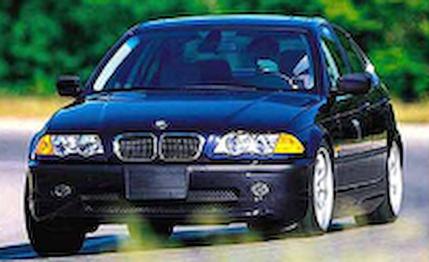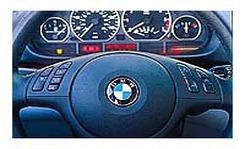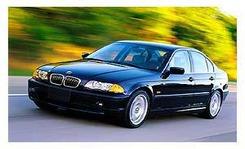
 Road Test
Road Test
We hold these truths to be self-evident: that all BMWs are more or less good cars, that they are endowed by their creator with certain indispensable abilities, among these are speed, agility, and the precision of neutral steering, and that when any form of change becomes destructive of these ends, it is the right of the people to dissolve the bonds which have connected them to BMW and to spend the cash on a used Zimmer.
Of course, such declarations are nothing short of treason to loyalists whose passage to Valhalla lies somewhere between the second and third gate of a ZF Type C gearbox bolted to any engine fitted with a blue and white roundel and six pots standing at attention. Fortunately for them and everyone else, the new 330i won't incite a revolution against the Old Order. It pretty much kicks fanny.


That's because the new engine grinds some real burr into the E46's otherwise velvety persona. It yanks the car out of apexes with a firmer tug and punts it to freeway speeds with all the attitude of a howitzer shell. With the holes open, the exhaust sings almost in tune with a Boxster at full boil. Okay, so it clipped mostly just fractions of seconds off the times of the last 328i we tested (November 1998), but our eyes, ears, and keisters say the car feels substantially rejuvenated.
This was by no means a foregone conclusion. The current E46 generation of the 3-series demonstrates that the company is not above tinkering with the core traits that made BMW a blue-chip brand among enthusiasts. The base E46's increased flab, its softer ride and steering, and the general inching of the car toward the side of cushiness are reprimands this publication has printed in the recent past.
With the 330i, BMW might have taken the opportunity afforded by greater power to nudge the car even more toward epicurean blandness. Last spring, for example, BMW announced in Munich that E46s built after June will have more steering boost to make parking easier. Judge for yourself the implications; we nearly choked on our Wiener schnitzel. What's next? An Autronic Eye on the dash to automatically dim the headlights?


The most obvious difference between the base 330i and 328i is the additional $590 that buys you six 496.5cc cylinders instead of six 465.5cc cylinders. The blip in displacement is courtesy of a stroke increase of 5.6 millimeters to 89.6mm. BMW says the added cubes only account for about 30 percent of the power spike over the 2.8-liter engine, which made 193 hp and 206 pound-feet, compared with the 330i's 225 hp and 214 pound-feet. Another 57 percent comes from fiddling with the profiles of the twin-chamber intake-manifold and exhaust ports, and the rest comes from changes in the cam profiles. Happiness through better breathing, in other words.
Thanks to the intake finagles shared with the 3.0-liter, the base 2.5-liter six also gets a 14-hp jolt to 184 hp. To be clear, every horse in the growing 3-series corral, including the wagons, coupes, sedans, convertibles, and their all-wheel-drive variants, will still offer the 2.5 (it will be the only choice in the wagon). And order returns to BMW's nomenclature, as a car with the 2.5 will be labeled properly as a 325, not a 323 as last year.
The M54, as the new engine is dubbed at Bimmer Central, employs basically the same architecture that debuted on BMW's original small six-banger in 1977, which didn't migrate to these shores till 1984. Since then, the engine has acquired a few tweaks, including twin cams, multivalve heads, an aluminum block, Nikasil-coated cylinder liners, and variable valve timing that BMW calls VANOS for "Variable Nockenwellen Spreizung." According to our Microsoft translator, that means "variable knockwurst splicer" and not "variable camshaft adjustment" as the press kit would have us believe.